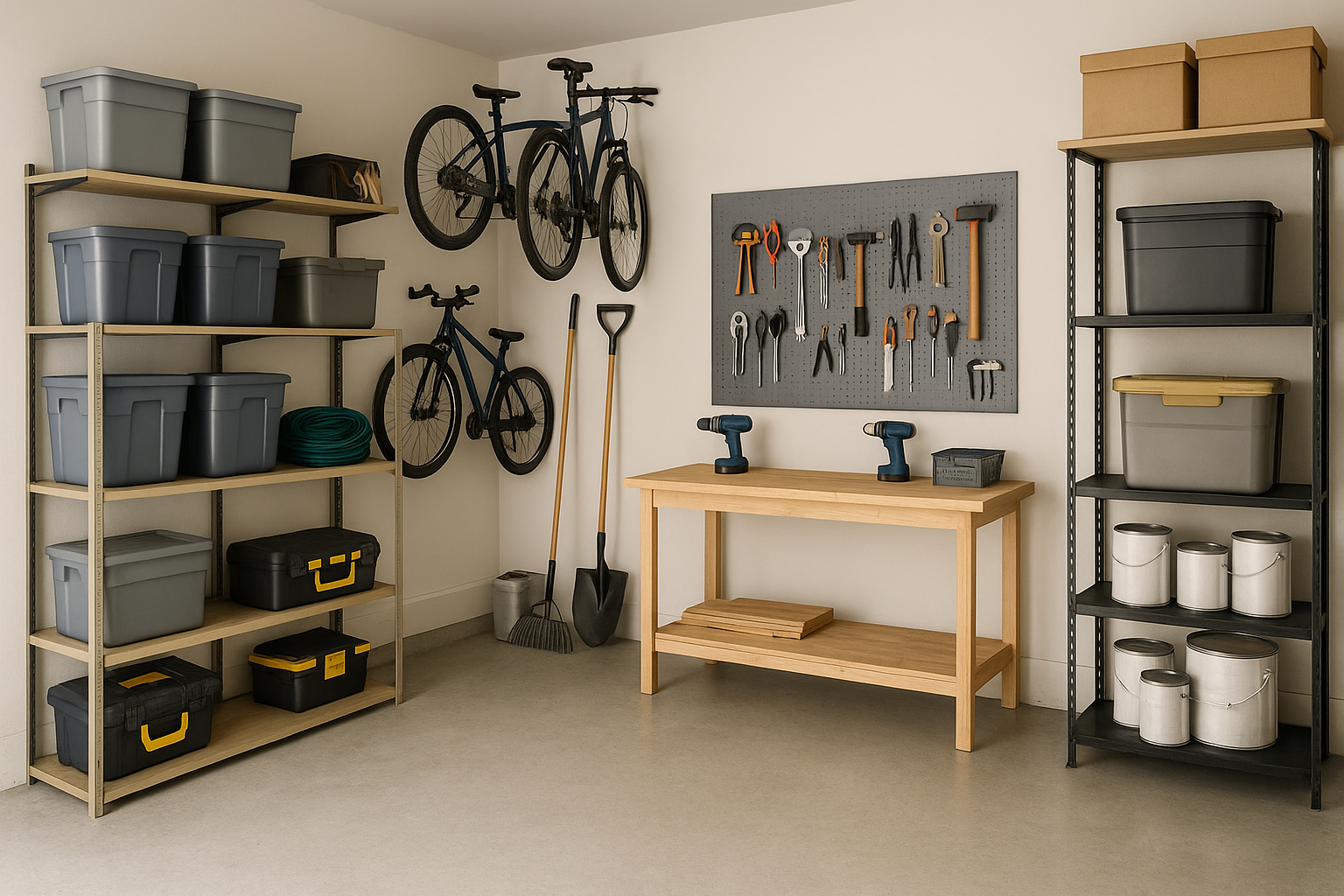For many homeowners, the garage serves multiple purposes. It’s not just a place to park vehicles—it’s also a storage area, workshop, and sometimes even a laundry or hobby space. Because it has to serve so many roles, the garage can quickly become cluttered and inefficient if not organized thoughtfully.
An organized garage isn’t just about appearances; it’s about functionality. When tools, equipment, and seasonal items are stored properly, you can save time, reduce frustration, and make better use of valuable square footage. With careful planning, smart storage solutions, and ongoing maintenance, your garage can become one of the most functional areas in your home.
Assessing Your Garage’s Needs and Goals
Before diving into organization, start with a clear understanding of how you use the garage. Consider:
- Do you primarily store vehicles, or is it mainly used for storage?
- Do you need space for hobbies like woodworking, gardening, or fitness?
- Are there seasonal items—like holiday décor or sports gear—that require accessible yet out-of-the-way storage?
By identifying your priorities, you can tailor the organization plan to fit your lifestyle, rather than forcing your needs into a generic setup.
Clearing Out the Clutter
A successful garage organization project begins with a full decluttering session. Remove everything from the space and sort items into categories: keep, donate, sell, and discard. Be honest about what you truly use—garages often accumulate broken tools, outdated equipment, and forgotten boxes that take up precious space.
If possible, plan this step on a day with good weather so you can temporarily use the driveway as your sorting area. This visual reset helps you see how much space you actually have to work with.
Creating Zones for Efficiency
Once the garage is cleared, think about dividing it into functional zones based on activity or item type. For example:
- Automotive Zone – Tools, cleaning supplies, and accessories for vehicles.
- Sports and Recreation Zone – Bikes, skateboards, sports gear, and camping equipment.
- Garden Zone – Lawn tools, planters, fertilizers, and hoses.
- Workshop Zone – Power tools, workbench, and small hardware.
- Seasonal Storage Zone – Holiday decorations, seasonal clothing, and equipment.
Zoning prevents unrelated items from getting mixed together and makes it easier to locate what you need quickly.
Maximizing Vertical Space
Floor space in the garage is often limited, especially if you park vehicles inside. Vertical storage solutions help free up floor area while keeping items visible and accessible. Consider:
- Wall-mounted shelves for large bins or boxes.
- Pegboards for tools and small equipment.
- Slatwall systems with adjustable hooks, baskets, and shelves.
- Ceiling-mounted racks for infrequently used or seasonal items.
These systems take advantage of unused space and help maintain a clear, open floor area.
Investing in Smart Storage Solutions
The right storage solutions can make a dramatic difference in how efficiently your garage operates. Sturdy shelving units, stackable bins, and clear containers are staples of any organized garage. Use clear labels to identify the contents of each bin, and keep similar items together.
For small parts and hardware, consider a multi-drawer organizer with compartments for screws, nails, and fasteners. Magnetic strips are great for keeping metal tools in sight and easy to grab.
Maintaining a Safe and Accessible Layout
A well-organized garage is also a safe one. Avoid stacking items too high or leaving heavy objects in precarious positions. Store frequently used items within easy reach, and keep hazardous materials—like chemicals or sharp tools—out of the reach of children and pets.
If you work with power tools, ensure that electrical outlets are accessible and cords are safely managed to prevent tripping hazards.
Creating a Functional Work Area
If your garage doubles as a workspace, dedicate a portion of it to a proper workbench. Ensure it has sufficient lighting, power access, and organized tool storage nearby. Pegboards above the bench can hold frequently used tools, while drawers can store smaller equipment.
A rolling tool chest can provide mobility and flexibility, allowing you to move essential tools wherever they’re needed.
Storing Seasonal and Bulky Items
Seasonal gear like skis, snowboards, or holiday decorations should be stored in clearly labeled bins on higher shelves or ceiling racks. Bulky items such as ladders or kayaks can be hung on specialized wall mounts to free up floor space.
Keeping these items out of the way during the off-season prevents them from crowding the areas you use daily.
Maintaining Order Over Time
The most challenging part of garage organization is keeping it that way. Establish habits that make maintenance easier:
- Return items to their designated zones immediately after use.
- Schedule seasonal cleanouts to reassess storage needs.
- Avoid bringing in unnecessary items that will add to clutter.
A little upkeep goes a long way toward preserving the efficiency and functionality you worked hard to create.
Adding Comfort and Aesthetic Appeal
While the garage is primarily a functional space, adding a touch of comfort can make it more pleasant to use. Consider painting the walls in a light color to brighten the space, adding anti-fatigue mats in work areas, or improving ventilation for comfort during warmer months.
Even simple touches like coordinated storage bins or a clean, swept floor can make the garage feel more inviting and motivate you to keep it organized.
Final Thoughts
An organized garage can transform how you use your home. By decluttering, zoning, maximizing vertical space, and choosing the right storage solutions, you can create a space that serves multiple purposes without feeling cramped or chaotic. With a little planning and consistent maintenance, your garage can become a highly efficient extension of your living space—a place where tools are easy to find, projects run smoothly, and there’s always room for what matters most.

